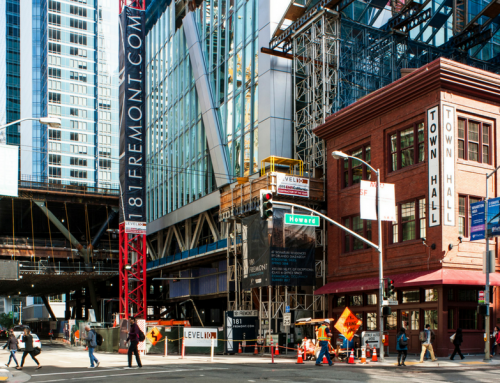Collaboration is essential to lean construction.
Daniel Hall is one of LISA’s advisors and pretty knowledgeable about lean construction. A recent Ph.D. in civil and environmental engineering at Stanford, and soon to be an Associate Professor at ETH Zurich, his research has focused on enhancing construction project governance and outcomes through new organizational models that integrate a once fragmented industry.
Known as lean construction, this collaborative project management movement has companies working more diligently than ever at putting together teams to improve efficiency.
Lean construction is about maximizing value and minimizing waste. It’s just not cost effective to have people trying to outbid and undercut each other, lean proponents embrace collaboration.
“The construction industry is so critical to our national economic strength,” says Lean Construction Institute Executive Director Dan Heinemeier in a brief video overview posted on LCI’s website.
“Unfortunately, the industry’s productivity has been stagnating and even declining over recent decades.”
Today, the LCI is seeing more and more design and construction firms turning to lean construction “to break the cycle of productivity decline while enhancing safety and unlocking value on projects.”
“But this is not just some touch-feely, toolbox-based approach to getting people to work together in harmony,” says Heinemeier. “Far from it. It’s grounded in the scientific method of the plan, do, check, adjust, and in a basic understanding of human nature—how teams can work together better to identify and eliminate waste and enhance value for owners.”
(A quick aside, here’s another example of women finding success in an industry still regarded as male dominated: besides LCI’s Executive Director, all of the organization’s top directors, managers, and other leaders are women.)
At LISA, we’re concerned not only with skyscrapers but other big, complicated construction projects as well, mainly sports arenas, hotels, and medical facilities.
In 2004, Sutter Health, a healthcare system in Northern California, held the “Sutter Health Lean Project Summit” and hired Lean Project Consulting, Inc. to prepare ideas for drastically improving and reshaping the construction practices for large healthcare facilities.
The paper, available here through LCI’s website, does an excellent job of distilling some of the themes underlying lean construction.
Here are the main ideas, with our (LCI’s) takeaways in quotes:
- Collaborate; collaborate throughout the design, planning, and execution: “There is an underlying assumption that design can be successful when separated from engineering and construction. Design is an iterative conversation; the choice of ends effects means.”
- Increase relatedness among all project participants: “People come together on AEC projects as strangers. They too often leave as enemies. Healthcare facilities projects are complex and long-lived, requiring ongoing learning, innovation, and collaboration to be successful. Participants need to develop relationships founded on trust if they are to share their mistakes as learning opportunities.”
- Projects are networks of commitments: “Projects are not processes. They are not value streams. The work of management in project environments is the ongoing articulation and activation of unique networks of commitment. The work of leaders is bringing coherence to the network of commitments in the face of the uncertain future and co-creating the future with project participants.”
- Optimize the project, not the pieces: “Projects spin out of control when practices push every manager to press for speed and lowest cost. Pushing for high productivity at the task level may maximize local performance, but it reduces the predictable release of work downstream, increases project durations, complicates coordination, and reduces trust. In design, we incur rework and delays. In the field, this means greater danger. We have a significant opportunity and responsibility to reduce workers’ exposure to hazards on construction projects.”
- Tightly couple action with learning: “Continuous improvement is possible when project performers learn in action. Work can be performed in a way that the performer gets immediate feedback. Doing work as single-piece flow avoids producing batches that in some way don’t meet customer expectations. The current separation of planning, execution, and control contributes to poor project performance and to declining expectations of what is possible.”
In other words, make the industry more collaborative and responsive.
“Ultimately, the lean process is meant to adapt to the project rather than the other way around,” says Kelly Lignos Ziv in the article, “What Does Lean Construction Really Mean?”
She writes, “Traditional construction management is a very well defined process and does not encourage straying from common procedure for the sake of efficiency and collaboration. The object in lean thinking is to keep the team working together on predetermined deliverables at a constant pace, thereby eliminating redundancies and guaranteeing maximum profitability.”






